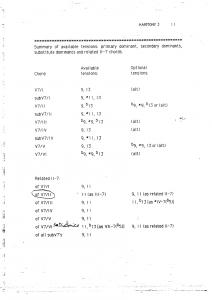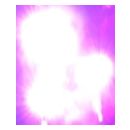- tension 11 hace intervalo de b9 con la 3º mayor del dominante
- subV7/III se forma sobre una nota diatónica (la 4º), por lo que al oirla te parece más un acorde de intercambio modal (IV7) que un substituto de dominante
- subV7/VI tres cuartos de lo mismo con bVII7 (aunque no sea diatónica, es un acorde de intercambio modal muy caracteristico)
Sólo en determinados casos en los que esté muy claro, se considerará a estos dos un substituto, debido al ritmo armónico o que los otros acordes que hay alrededor den a entender que así lo és.
- y otro que no se usa aunque no preguntes porque ya de por sí no se usa su dominante secundario, pero se comenta que V/IV (que tiene de tónica la 1ª) no debe considerarse un subV7/VII
y el subV7/V quizás no lo citan porque en clásico coincide el acorde de 6ª aumentada y tiene una especie de doble función segun como la uses
Pero teniendo encuenta que es un libro de teoria moderna, no entiendo cual es el problema en nombrarlo como tal
Alguien escribió:
In classical theory, however, the jazz subV7/V (A-flat7: A-flat, C, E-flat, and G-flat) appears as the idiotically so-called German Augmented Sixth sonority, and is notated A-flat, C, E-flat, and F-sharp. The augmented sixth interval from A-flat to F-sharp is enharmonically exactly the same as the minor seventh from A-flat to G-flat in the jazz subV7/V.
Though the classical nomenclature is foolish - Ger.+6 in an analysis tells one less than nothing about what is going on or how the chord functions - the notation is, in fact, right in line with what the harmonic overtone series implies. Fact is, a German Augmented Sixth chord is an altered secondary dominant (!), which is, in this case, and altered D(m7) (Or D7): V7/V.
The way this chord is created - as well as what the overtone series implies is the logical basis for it - goes back to the passive tone/active tone dichotomy. The D(m7) is spelled D, F-sharp, A, and C, where the D to A perfect fifth represents the passive tones, and the F-sharp to C represent the active tritone. In order to increase the resolutional impetus of this D(m7) chord, we can either change the A to A-flat, thereby making it a leaning tone (Which creates a D(d5m7) chord (Or D7(flat-5), in jazz terminology)), or we can replace the root with E-flat, thereby making it a leaning tone (Which creates an F-sharp fully diminished seventh chord in a 4/2 orientation). If we perform BOTH of these alterations simultaneously, we get the so-called German Augmented Sixth chord, with the traditional notation.









